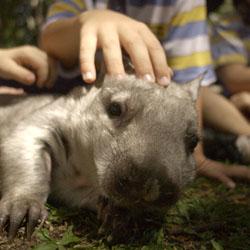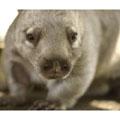Baby wombat prepares to save her cousins
Published on 18 September, 2002
The baby wombat, Kooloola (or Lulu), is the latest addition to the Central Queensland Wombat Research Centre which has been designed to help save the northern hairy-nosed wombat. The northern species is one of the world's most endangered mammals with only 110 surviving on one small national park in Central Queensland.
 Kooloola was named after the property she was found on in South Australia. She arrived at the Centre at the tender age of 3.6-months-old, weighing just 224 grams. She was pink, furless and her eyes were still sealed. She is the first wombat to be raised by a carer from the pouch in Central Queensland.
Kooloola was named after the property she was found on in South Australia. She arrived at the Centre at the tender age of 3.6-months-old, weighing just 224 grams. She was pink, furless and her eyes were still sealed. She is the first wombat to be raised by a carer from the pouch in Central Queensland.
Today Kooloola weighs in at a little over 4kg and is almost 58cm long with a beautiful silky deep grey coat. Kooloola is cared for by wildlife carer Annie Saunders, who has nurtured the baby wombat in a home environment since her arrival in Rockhampton.
"She sleeps most of the day and only wakes for feeds (three per day) and a wander around in the early morning and late afternoon or evening," Ms Saunders said.
"It is thought that Kooloola will become a surrogate mother to some northern hair-nosed wombats in the future. However, she won't be ready to breed until she is two-years-old." Central Queensland University postgraduate candidate Glenn Druery is researching the reproduction of the southern hairy-nosed wombat at the Rockhampton-based Research Centre. He is currently in South Australia researching super-ovulation techniques that could be practised in Central Queensland.
 Kooloola was introduced to a group of year one children during a visit to the Wombat Research Centre today. This was the first time the wombat had been photographed by the media.
Kooloola was introduced to a group of year one children during a visit to the Wombat Research Centre today. This was the first time the wombat had been photographed by the media.

